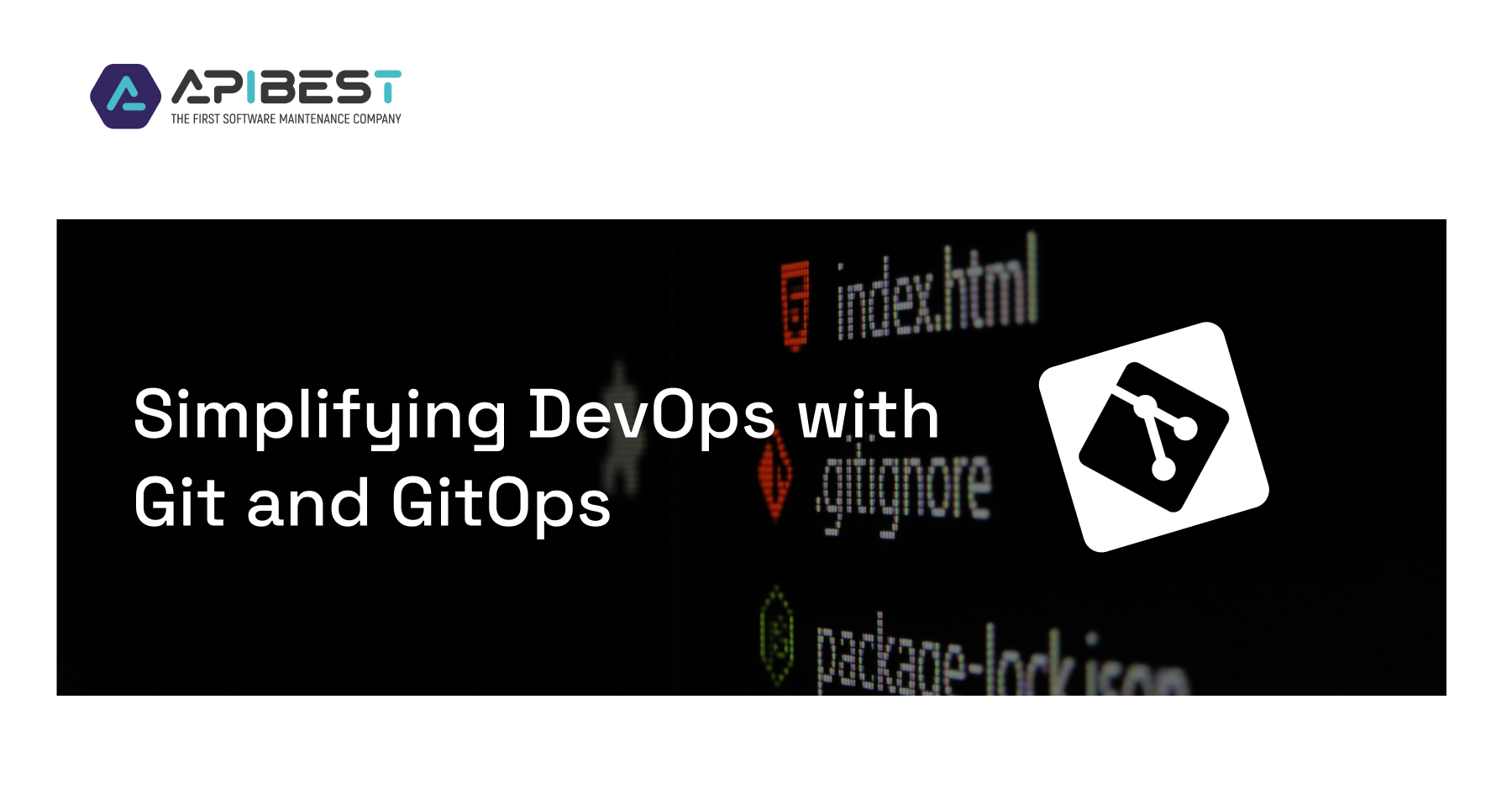
Efficiency and automation are paramount in the ever-evolving software development landscape. The adoption of DevOps practices has transformed how teams collaborate and deploy software, and two influential tools, Git and GitOps, have emerged to simplify and optimize the DevOps process. In this article, we will delve into the fundamentals of Git, introduce the innovative concept of GitOps, and explore the powerful synergy between these tools in simplifying and enhancing DevOps workflows.
What is Git?
Git is a distributed version control system that allows teams to track changes and collaborate on code repositories. It provides a secure and efficient way to manage code, enabling seamless collaboration, version control, and the ability to roll back changes if needed. Git provides a reliable foundation for the DevOps process, ensuring that code changes are tracked, shared, and deployed consistently across development, testing, and production environments.
Introducing GitOps
GitOps is an operational framework that leverages Git as a single source of truth for managing infrastructure and application deployments. It extends the benefits of Git's version control capabilities to the entire software delivery and operations lifecycle. With GitOps, infrastructure and configuration changes are managed through Git repositories, enabling declarative, auditable, and automated deployment processes. This approach brings greater visibility, traceability, and consistency to the DevOps workflow.
Let's consider a scenario where a development team wants to deploy a web application using GitOps methodology. Here's how the GitOps process unfolds:
- Infrastructure Configuration
The team defines the desired infrastructure state using infrastructure-as-code (IaC) tools like Terraform. They create a Git repository to store the infrastructure code, including the necessary resources such as virtual machines, databases, and networking components. Any changes to the infrastructure configuration are committed and pushed to the Git repository.
- Application Code
The team develops the application code and uses Git to version control it. They create a separate Git repository for the application code and follow Git best practices to manage changes, branches, and merge requests. Continuous integration and continuous deployment (CI/CD) pipelines are set up to automatically build, test, and package the application.
- GitOps Repository
A GitOps repository is created to serve as the central source of truth for the entire system. This repository contains the declarative configurations for both the infrastructure and application components. It includes files like Kubernetes manifests or Helm charts that define the desired state of the system.
- Continuous Deployment
With GitOps, the deployment process is triggered automatically when changes are pushed to the Git repositories. The CI/CD pipeline builds and packages the application code, and the resulting artefacts are stored in the GitOps repository. The GitOps tool, such as Flux or Argo CD, continuously monitors the GitOps repository for changes.
- Reconciliation Loop
The GitOps tool continuously compares the desired state defined in the GitOps repository with the current state of the infrastructure and application. If any discrepancies are found, the tool automatically applies the necessary changes to reconcile the system with the desired state. This ensures that the deployed system always matches the declared configuration.
- Observability and Monitoring
GitOps provides observability into the system's state and health. Monitoring tools like Prometheus and Grafana can be integrated into the GitOps pipeline to collect metrics, track performance, and generate alerts. This allows teams to gain insights into the system's behaviour and respond quickly to any issues.
Through GitOps, the development team achieves a simplified and automated deployment process.
The connection between DevOps and GitOps
DevOps and GitOps are closely connected and complement each other in modern software development practices.
The connection lies in their shared goals of automation, collaboration, and reproducibility. DevOps practices enable teams to streamline development, testing, deployment, and operations workflows. GitOps complements DevOps by providing a framework for managing infrastructure and application configurations as code, enabling teams to apply DevOps principles to their infrastructure and deployments.
By adopting GitOps within the DevOps context, teams can achieve the following benefits:
- Infrastructure as Code: GitOps promotes the use of infrastructure-as-code tools like Terraform or CloudFormation, allowing teams to define and manage infrastructure configurations in a version-controlled manner. This enhances reproducibility, scalability, and consistency across environments.
- Version Control: GitOps leverages Git's powerful version control capabilities, providing a history of changes, easy rollbacks, and traceability. This helps teams track and manage changes to infrastructure and application configurations over time.
- Automated Deployments: GitOps enables automated deployments by continuously monitoring Git repositories for changes and applying them to the target environments. This automation reduces manual errors and ensures that deployments are consistent and repeatable.
- Auditing and Compliance: GitOps provides an audit trail of all changes made to the system, making it easier to track and verify compliance with regulations and security policies. This enhances governance and facilitates regulatory audits.
- Collaboration and Visibility: GitOps centralizes the configuration management process, enabling collaboration between development, operations, and other teams. It provides visibility into changes, promotes code review practices, and facilitates knowledge sharing.
In summary, DevOps and GitOps work together to streamline the software development lifecycle, enhance collaboration, and improve infrastructure and application management. By adopting GitOps practices within the DevOps framework, teams can achieve greater efficiency, reliability, and scalability in their deployments, while maintaining version control, auditability, and reproducibility of their infrastructure and application configurations.
